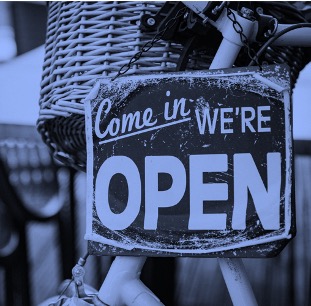How to measure brand affinity for community-led growth
This blog is an excerpt from Derek Weeks' upcoming book: Unfair Mindshare, a CMO's guide to community-led marketing in a product-led world.
“The more we spoke about DevOps, the more our brand affinity in the market grew”, shared Mary Engvall - author of The Business Value of Developer Relations - and former community builder at Chef. “People would come up to us at our event booth and say “I have problem X, can you help me solve it?” Mary continued. “Sometimes that problem was related to software we sold, and other times it was not.”
“People were surprised but also impressed when we sometimes admitted that our company’s product could not solve that specific problem, but we knew a competitor’s product was well-suited for that use case. At that early growth stage in our market, we recognized that a rising tide lifts all boats and that being a good steward of the community would benefit us in the long run.”
Like many others running community-led motions, Mary understood there was a direct correlation between her activities in the community and a growing interest in her company’s products. The challenge was she could not always measure it.
This is where brand affinity plays a role in community-led motions. Relationships and connections form in a community organically. People in the community help one another. Those who help others build stronger reputations in their community.
For community-led marketers who build connections and share knowledge, the relationships they form become personal and hold strong emotional ties. Those emotional ties build trust between community members and extend to the corporate brand represented by the community marketer.
Brand affinity that grows from these relationships can positively impact company performance. It has long been said people want to do business with people they know, trust, and like. Brand affinity also supports greater brand loyalty. Where loyal customers may be used to purchasing the same product repeatedly, their relationship with a brand can be easily swayed by newer, cheaper, or faster alternatives. When community relationships link brand affinity to loyalty, the product/customer relationship becomes harder to break.
For example, in the CMO Coffee Talk community, many participants are 6sense or Heinz Marketing customers. After spending months or years building relationships with marketing leaders in the Coffee Talk community, it would be more challenging for me and others to walk away from their products or services in search of a competitive alternative. We not only like their products, we like them as people. As such, if we did have an issue or challenge, we would be more likely to bring it to their attention first to find a solution rather than abruptly severing the relationship.
Another element of brand affinity that works well in community-led settings is what Dr. Robert Cialdini, author of Influence: The Psychology of Persuasion, calls peer-suasion. While the emphasis is mine, he describes this as “an action coming from similar others [e.g., community peers] increases our confidence that it will prove valid, feasible, and socially acceptable should we perform it [e.g., buying a product]. Therefore, we are more inclined to follow the lead of our peers in a phenomenon we can call peer-suasion.”
Social connections are, therefore, a tremendous lever for brand affinity. The more we see others taking action, the more likely we will be comfortable taking the same action. As the community grows, so does the number of people taking action

Image: Looking for Higher (and Higher) Meaning: the draw of the many is devilishly strong ©Punch/Rothco
Relationships formed through All Day DevOps (ADDO) worked similarly. More people did business with our company because of the work we were doing in the community. The challenge is that brand affinity is very difficult to measure precisely. Measuring the first or multiple touches in a community of hundreds or thousands of people is challenging to tie directly into marketing or account-qualified leads. The practice works better at the smallest scale, but tracking becomes nearly impossible beyond the earliest stages of growth.
That said, when it comes to community-led marketing, CMOs cannot ignore the power of brand affinity just because it is difficult to measure. Affinity is not created overnight and won’t show results after one activity or engagement. For CMOs who do want to measure it, take a longer-term perspective. Measure affinity over a series of events and activities.
Keep your initial measure simple for those just beginning to measure affinity associated with community-led motions. For example, Insight Partners says affinity can be measured by “collecting data against the key activities that create value for your community. For example:
- Attended the user conference
- Hosted a virtual event
- Contributed technical documentation
- Engaged in the community forum”
They also recommend tracking those activities to understand the relationship's strength. For example, if I attended the CMO CoffeeTalk 80% of the time over the past six months, shared social posts that I was interacting with other community members, and then attended an in-person meeting of the forum, my affinity score would be higher than someone who attended 90% of the CMO Coffee Talks last year but had not participated in any of them for the past 9 months.
Calculating the affinity score for an individual could be as simple as:
- Activity A x Recency (days/months/years) = Affinity Score
- Activity B x Recency (days/months/years) = Affinity Score
- Activity C x Recency (days/months/years) = Affinity Score
- = Total Affinity Score
Insight Partners goes further on tracking key performance indicators across community member engagement. In her blog, Measuring the Impact of a Community-Led Growth Motion, Whitney Rothe shares, “Your organization’s ability to report on relevant KPIs will evolve in sophistication as the community grows. Remember that community is additive and should not be considered a separate sourcing engine for business value”.
Whitney shares the following KPIs across community, prospect, and customer engagements that can measure engagement:

Image: Performance KPIs to consider. Source: Insight Partners, Measuring the Impact of Community-driven Motion (2021)
As community-led resources and tooling at your company grow, brand affinity can be tracked in new sales and renewals. For example, 6sense keeps track of how many members are active in their CMO Coffee Talk community and reports on how many become business customers over time. They can also measure the power of brand affinity from this community regarding recommendations from its community members to another non-member CMOs who are considering making a new 6sense purchase. 6sense can also track that community members are X times more likely to renew their contract for the company’s products - a direct correlation to their brand affinity.
Brand affinity through community-led marketing efforts ties to three outcomes for your business. The affinity reduces sales cycles, increases the number of qualified leads from your community, and leads to higher retention rates.
According to the 2022 State of Community Management report, brand affinity builds trust between your organization and community members. When high levels of trust are built in the community before any engagement by your sales organization, familiarity with your brand will accelerate the sales cycle. Without the support of community-led engagements, sales teams would have to commit more time to build trust with economic buyers and influencers within a target account.

Community-led engagements also improve the quality of leads entering the sales pipeline. Activity in a community can be tracked over time and provide more insight into the interests of key accounts and stakeholders. The number and frequency of community conversations, content sharing, event participation, and referrals can be used to identify stronger intent signals for lead scoring.
As discussed in the CMO Coffee Talk example above, community members who spend more time with people from your company are more likely to renew or expand their investments with you. Community members want to do business with people they know and trust.
If you want more insight into managing community-led initiatives, stay tuned to our regular updates on this blog through our Twitter and LinkedIn updates.

 By
By


